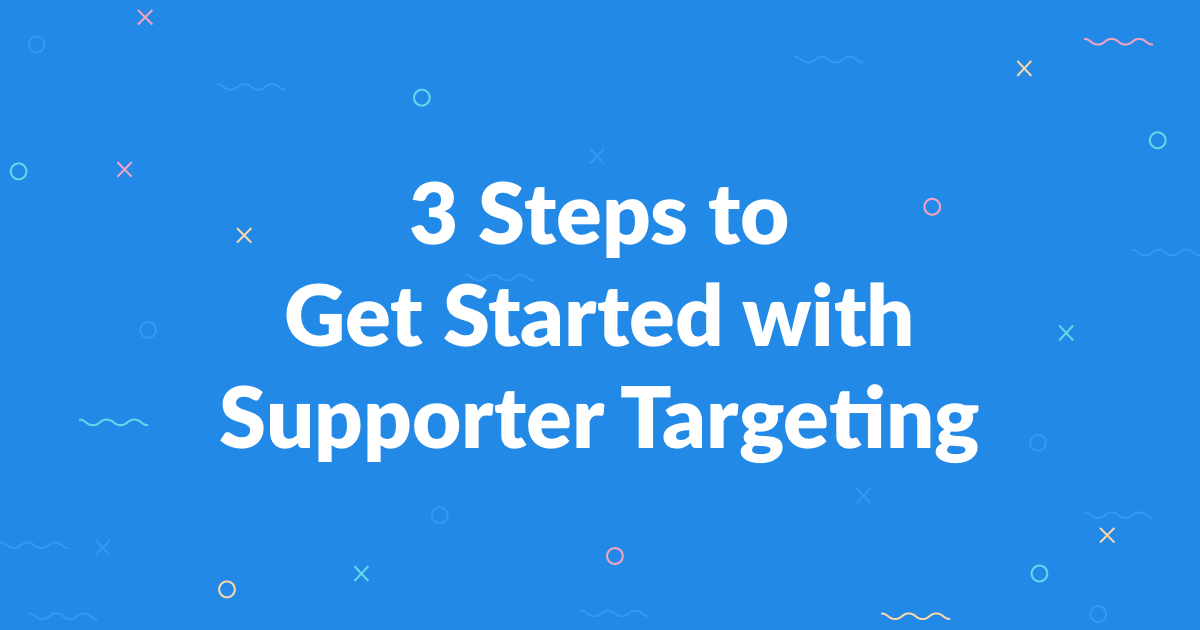3 Steps to Get Started with Supporter Targeting

Development teams know that targeting the right supporters, with the right message, at the right time creates better engagement and helps you raise more for your mission – without a surging workload. When getting started with powerful targeting, your first steps are:
- Defining your audiences with relationship data,
- Referencing behavioral data in your messaging, and
- Putting that data into action with email automation.
Relationship Data
One way you can connect more deeply with your audiences is by identifying and reflecting back their relationship with your organization. You can begin to do this by referencing all of your online and offline donor data, and then asking what you know about your supporters. Begin with the basics: where do they live? How old are they? What identities do you know they hold?
Once you’ve identified these patterns among your supporters, you can tailor your messaging to each audience.
For instance, fundraisers are beginning to see more Millennials become donors. The oldest of the Millennials will turn 40 this year. And while they won’t be the majority of your donors anytime soon, these are relationships you want to grow and deepen. While Millennials will care just as much about your program work as your Gen X and Boomer donors, they will likely want to hear about it in a different voice and from a different signer. This is one way you can tailor your messaging to reflect back these donors’ relationships with your organization.
Behavioral Data
A second way you can use targeted messaging to raise more revenue is to define your audiences by behaviors. Consider email opens, email clickthrough, social media follows, volunteer histories, donor histories, and advocacy histories, but don’t stop there.
For instance, consider starting emails to supporters by recognizing the area where they have been most engaged with your organization over the last six months.
With your supporters who are regular advocacy action takers, start your message with:
Hi Susan,
Thank you for caring for the planet so much that you have been willing to take action more than a dozen times in the last six months…
For a donor who just upgraded their gift:
Hi Steve,
Thank you for your recent extraordinary generosity. I so appreciate that you are able to give more than ever before. You enable our team to get more healthy meals to people in need right now…
And for your volunteers:
Hi Stephanie,
Day in and day out, volunteers are the backbone of what we do at People for Good. And you are truly amazing in that you have been a volunteer for more than 6 years now. Your dedication…
By identifying your audiences around the way they are most engaged with your organization, and celebrating their different types of support, you start your supporter messages in a way that will encourage deeper engagement, make them feel great, and increase the likelihood that they will respond to your asks.
Use Automation with Your Email
Once you’ve defined your audiences by relationships and behavior, you can begin to apply targeting in an impactful way by focusing on a single, highly-used channel — often, that starting place will be your email channel. In order to be confident that your emails are targeting your different audiences accurately, you’ll need to see all of your demographic and behavioral data at once. This will help make sure the right information gets into the right hands at the right time. After you’ve identified which email messages should go to which audiences, you can automate these messages in order to save time while remaining confident that each of your contacts will receive an ask that’s appropriate for them.
It’s clear: as a nonprofit fundraiser, you can raise more for your mission when you can see all of your data at a glance, know the audiences you’re speaking to, and target each audience with messaging that resonates.


